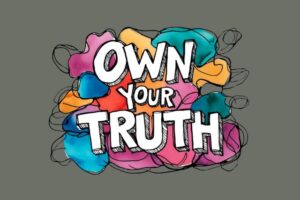Leaving No One Behind: The Heart of Inclusive Growth and Development
Leaving no one behind isn’t just a development buzzword — it’s a moral commitment. It speaks to the very soul of humanity, reminding us that real progress only happens when everyone — especially the most vulnerable — is seen, heard, and empowered. It’s a call to uplift those who’ve been pushed aside, forgotten, or silenced.
At its core, leaving no one behind means recognizing that every person — regardless of gender, geography, background, ability, or income — deserves the opportunity to live a life filled with dignity, purpose, and hope.
This principle challenges us to look beyond numbers and into the lives behind them. It calls for inclusive systems that aren’t built only for the majority but are designed to elevate the most marginalized. When we build with the furthest behind in mind, we create better outcomes for everyone.
But leaving no one behind goes deeper than offering temporary support. It demands that we confront the structural injustices — poverty, inequality, discrimination — that trap people in cycles of exclusion. It shifts our mindset from charity to justice, from performative efforts to transformative change.
It’s not enough to set goals or track progress on paper. Development is not truly “inclusive” if even one person is left without access to education, healthcare, safety, or the chance to thrive.
When we embrace leaving no one behind as a guiding principle, we aren’t just committing to fairness — we’re building a future based on empathy, equity, and shared humanity.
Key Areas Where We Must Ensure Inclusive Development
1. Access to Education for All
Leaving no one behind starts in the classroom. Education is a powerful equalizer, yet countless children — especially girls, children with disabilities, and those from poor communities — remain locked out of this basic right. Inclusive development means tearing down barriers to quality education by tackling poverty, bias, and under-resourcing.
It means building safe schools, training empathetic teachers, and creating learning environments where every child belongs.
2. Universal Healthcare That Reaches Everyone
Health is a human right — and leaving no one behind demands that we treat it that way. Too many people are still left without access to doctors, medicines, or even clean clinics. Marginalized groups suffer the most, often facing systemic neglect or bias in care.
Inclusive development means building strong, affordable, and compassionate healthcare systems that reach the last person in the remotest village.
3. Clean Water and Sanitation for Every Community
Can we speak of dignity if people lack clean water to drink or safe toilets to use? Leaving no one behind requires that we invest in clean water and sanitation, not just in urban centers but in the underserved rural and informal communities too.
This is not only about health — it’s about restoring dignity and safety, especially for women and girls.
4. Empowering the Marginalized in Decision-Making
People know best what they need. Leaving no one behind means giving power back to those who’ve had it taken away — including women, persons with disabilities, ethnic minorities, and displaced populations.
When marginalized communities have a seat at the table, policies become more just, more relevant, and more impactful. Empowerment isn’t a gift — it’s a right.
5. Strengthening Social Protection for the Vulnerable
Crises hit the poor hardest. Whether it’s economic downturns, health emergencies, or job losses, leaving no one behind requires robust social protection systems — safety nets like food support, pensions, and healthcare coverage.
When we support people during hardship, we don’t just help them survive — we give them the tools to rebuild and flourish.
6. Achieving True Gender Equality
Gender inequality continues to rob millions of opportunities and safety. Leaving no one behind means dismantling the harmful norms and systemic biases that keep women and girls behind.
It’s not enough to promote equality in policy — we must confront gender-based violence, unequal pay, and discriminatory practices that are deeply embedded in society.
7. Investing in Inclusive Infrastructure and Technology
From rural roads to internet access, leaving no one behind means closing the urban-rural divide. Infrastructure connects people to services, to opportunities, to each other.
Digital technology, too, can be a bridge — but only if it’s accessible to everyone. Inclusive development means ensuring everyone is digitally connected, especially women and young people in underserved regions.
8. Data That Reflects Every Voice
If we can’t see people in our data, we can’t serve them. Leaving no one behind means collecting and using disaggregated data — by gender, age, disability, ethnicity, location — so we can understand who is being excluded and why.
With accurate data, we make better decisions, target resources where they’re needed most, and ensure no group is invisible in development planning.
9. Addressing Climate Change with Justice
Climate change is a threat multiplier — and its impacts are deeply unequal. Leaving no one behind in the climate response means listening to those who are most affected: indigenous communities, coastal populations, low-income farmers, and future generations.
We must ensure they have a voice and a choice in shaping climate solutions.
10. Protecting Our Planet for All Generations
The environment doesn’t belong to the few — it’s our shared inheritance. Leaving no one behind means integrating environmental justice into our development goals. Whether it’s renewable energy, clean air, or biodiversity, we must protect our ecosystems so every person today — and tomorrow — can live in balance with nature.
In a Nutshell: Leaving No One Behind Is Inclusive Development
Inclusive development is not a luxury — it is a necessity. It’s about equity over equality, opportunity over charity, and justice over convenience. It requires us to face hard truths, listen deeply, and redesign systems to reflect the lived realities of those often left at the margins.
Leaving no one behind must be our default — not an afterthought.
Beyond the SDGs: A Lifelong Commitment to Leaving No One Behind
While the Sustainable Development Goals (SDGs) have offered us a powerful roadmap, leaving no one behind doesn’t expire in 2030. It’s a permanent promise — one that demands continuous action, reflection, and renewal.
To go beyond the SDGs means:
Making inclusivity a lifetime practice, not just a campaign slogan.
Localizing development solutions so that communities own them.
Recognizing that all development goals are interconnected — from education to the environment.
Tackling the root causes of marginalization, not just its symptoms.
Most importantly, leaving no one behind isn’t just the job of governments or organizations. Each one of us has a role to play — whether by amplifying unheard voices, advocating for inclusive policies, or standing beside those struggling for their basic rights.
Final Word
True progress is not measured by how far the fastest can run — but by how many of us rise together. Leaving no one behind is not a choice, it’s our shared responsibility.
Let us carry this principle forward, not just as a development ideal, but as a human obligation — to build a world that is just, inclusive, and built for everyone.
















